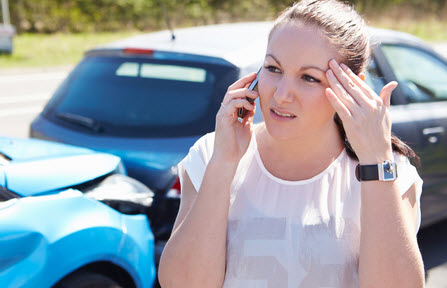Insurance companies are in business to make money, not to help people in times of need. Since they make money by denying claims, they use teams of investigators and lawyers who scour through the facts and the law looking for loopholes that enable them to deny liability in car crash claims.
An effective attorney is the only way to balance the scales. Whereas the insurance company wants to pay the least amount of compensation possible, an attorney is determined to get victims the most amount of money possible to compensate them for their economic and noneconomic losses.
The Contributory Negligence Defense in Florida
One of the most time-honored insurance company tactics is to shift blame for the car accident onto the victim. That’s possible in many cases, especially if the victim arguably did anything wrong, such as drive a few miles per hour over the speed limit.
First, the judge must determine that the victim and tortfeasor (negligent driver) were both sufficiently at fault for the car accident to merit an appropriate jury instruction. Typically, the insurance company must present enough evidence to convince the judge that the vehicle collision would not have occurred if the victim had not been speeding or whatever.
If the judge sides with the insurance company, the jury must apportion fault between the two parties. Florida is a pure comparative fault state, so the judge divides damages strictly according to the percentage of fault.
For example, if the victim’s damages were $100,000 and the jury divided fault 50-50, the victim would receive $50,000 in Florida. But in many other states, the victim would receive nothing under these same facts, because most jurisdictions have a 51 percent threshold.
Breaking Down the Assumption of the Risk Defense in Florida
If the victim was a passenger in the tortfeasor’s vehicle, insurance companies often introduce the assumption of the risk defense, especially if the tortfeasor exhibited behavioral negligence, such as alcohol impairment. For the defense to apply, the victim must:
- Voluntarily assume
- A known risk.
Sports injuries are a good example. Participants assume the risk of most game-related injuries, either because they sign liability waivers or because they participate in the dangerous activity. But they do not assume the risk of other injuries, such as a slip-and-fall in the parking lot. As a brief side note, some liability waivers are void because they are against public policy or because they are take-it-or-leave-it contracts of adhesion.
The Last Clear Chance Defense in Florida
If the victim had an opportunity to avoid the car wreck but did not do so, the tortfeasor is not liable for damages. This defense often comes up in intersection collision cases, if the victim might have averted the crash by slowing down or changing lanes. But there is a difference between the last clear chance and any theoretical chance. Sometimes, heavy traffic makes such maneuvers impossible; other times, the car accident happened so fast that the victim had no reasonable opportunity to avoid it.
Connect With Assertive Attorneys
Insurance companies try their hardest to reduce or deny compensation in negligence cases. For a free consultation with an experienced personal injury lawyer in Brandon, contact Reed & Reed. We have four area offices (St. Petersburg, Lakeland, Tampa, and Clearwater).
Resource:
leg.state.fl.us/statutes/index.cfm?App_mode=Display_Statute&URL=0700-0799/0768/Sections/0768.81.html

